One morning in September, I read the news that the Tupperware company had filed for bankruptcy. The article began:
“The company behind Tupperware, the plastic kitchenware that revolutionized food storage after World War II and became inextricably linked to the parties where women seeking a measure of financial independence and fun in midcentury America sold the colorful products, has filed for bankruptcy.”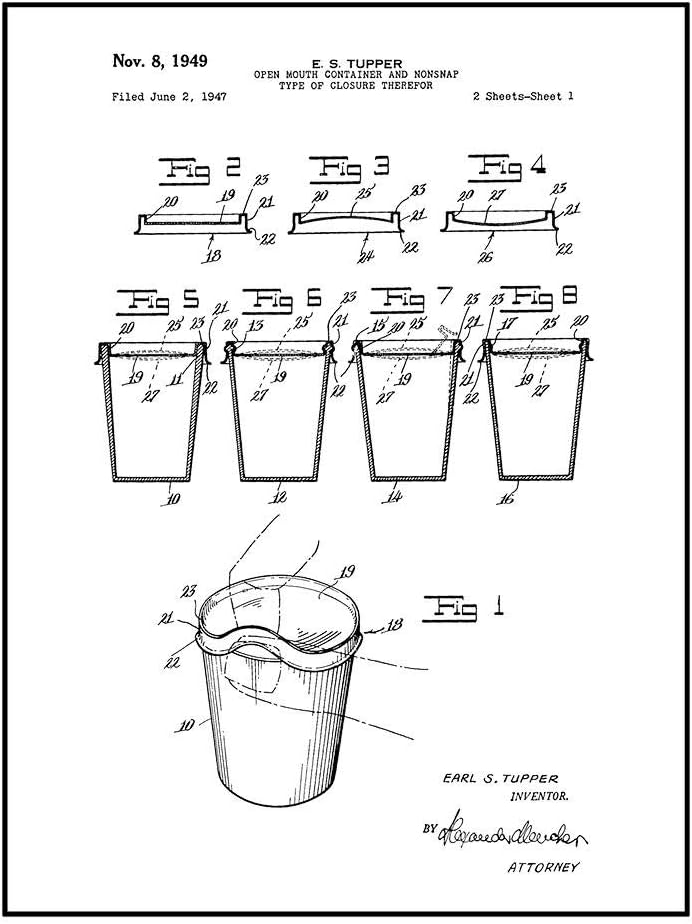
Seeing the decline of such an iconic American brand led me to wonder, how did Tupperware come to be?
The inventor of Tupperware was Earl Tupper (1907–1983). Tupper had a keen interest in designing and inventing products since his adolescence, filling notebooks with his ideas.
By the 1930s, Tupper lived on a small farm in New Hampshire and ran a struggling tree surgery business. He also tinkered with salvaged materials to develop household goods. Tupper held several patents beginning in 1935 with a removable rumble seat top before expanding to diverse items made of plastic such as combs, shoe heels, cigarette and match cases, pitchers, and other containers.
By 1937, he was putting those innovating skills to use as he worked as a sample maker for DuPont in Massachusetts. In 1939, he started his own company, Tupper Plastics Corporation.
Tupper Plastics made items like beads, cigarette cases, and soap dishes. In 1946 Tupper got his hands on some pure polyethylene pellets from DuPont. DuPont didn't believe raw polyethylene could be molded, but Tupper played around with the formulations and eventually invented his iconic container with the airtight lid, originally branded as the "Wonderlier Bowl."
On June 2, 1947, Earl Tupper filed a patent for the "E.S. Tupper Open Mouth Container and Nonsnap type of Closure Therefor". The patent for the airtight container, featuring a "burping seal" was granted in 1949.
The container was designed to be airtight and leak-proof, keeping food fresh longer and reducing food waste.
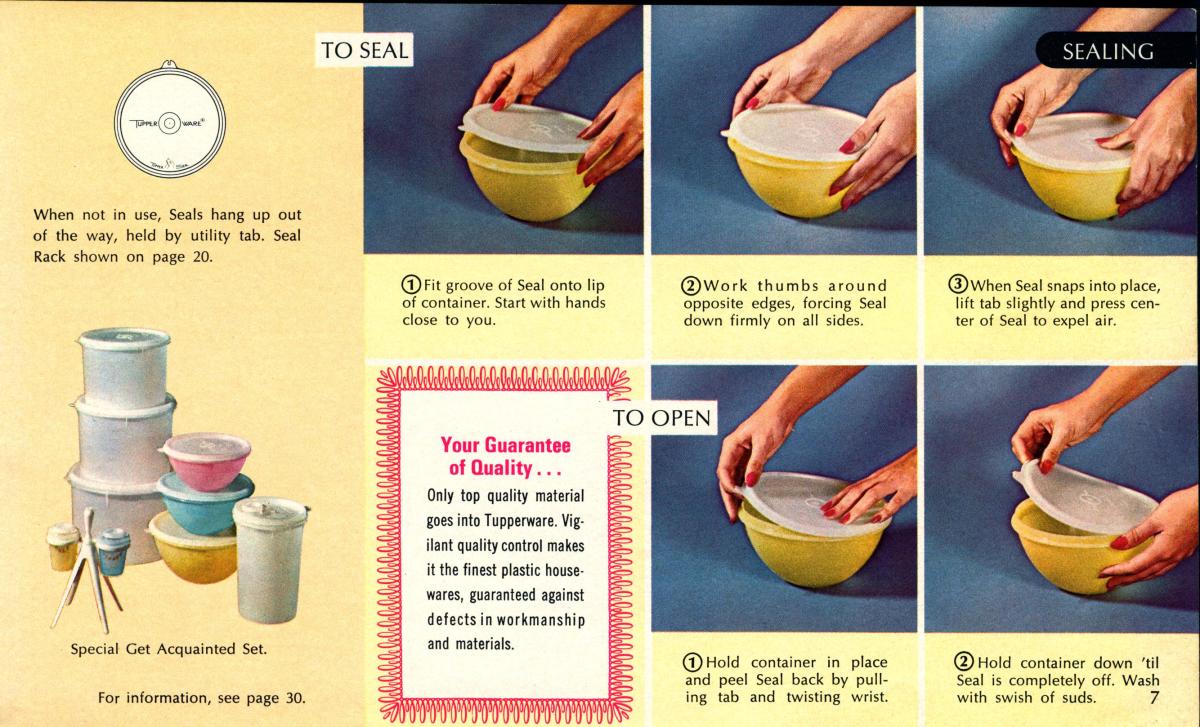
The other innovation that made a difference in the sales of Tupperware, was how they were marketed. In 1948 the first Tupperware parties were promoted as a way for women to earn income by selling the lidded bowls to their friends and neighbors. One woman who began selling Tupperware was Brownie Wise, a divorced, single mother in Detroit with a knack for hosting parties. Wise was a former sales representative of Stanley Home Products, before switching to selling Tupperware. It was Wise’s suggestion that Tupperware be removed from stores and sold only through the “Party Plan.” Wise was vice president of Tupperware Home Parties between 1951 and 1958.
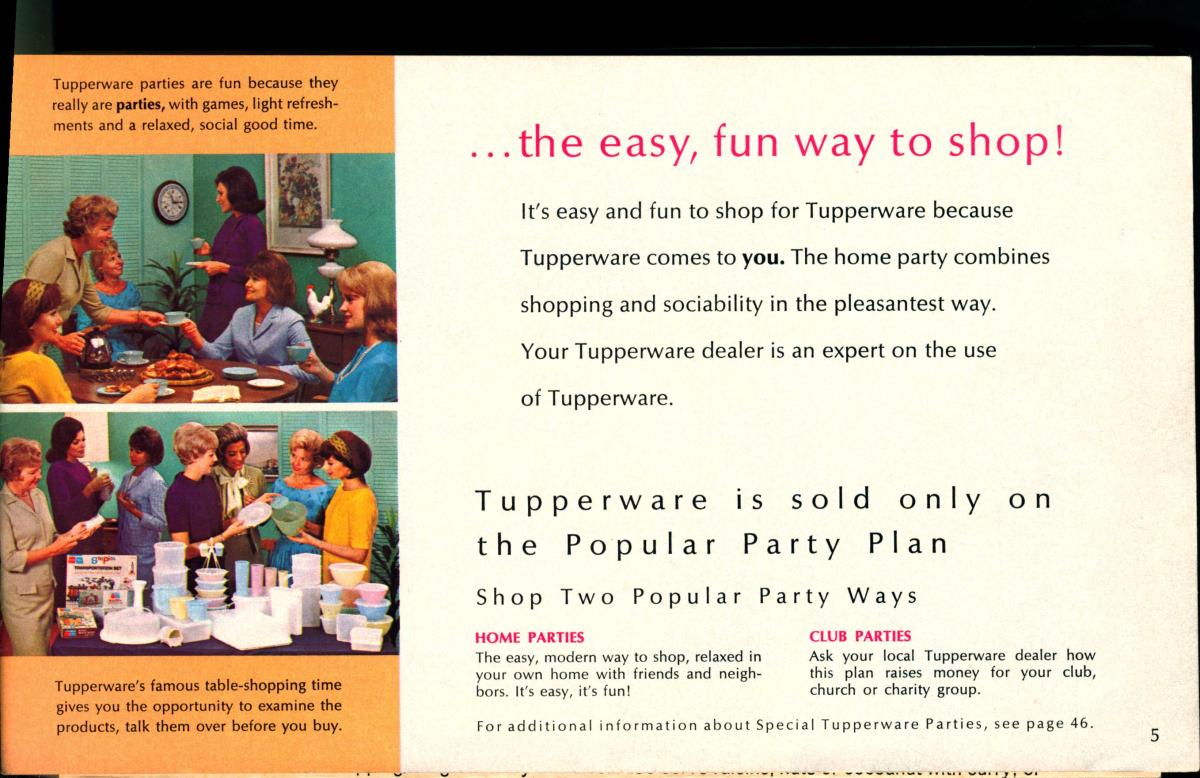
To throw a Tupperware party, Tupperware consultants would find a customer willing to host a gathering at their home. The host invited family and friends for an event where they could see the products in use, perhaps by serving food and drinks in Tupperware products. Guests could then place orders for the products they wanted. Tupperware party hosts typically received merchandise gifts according to the value of the amount of Tupperware sold.
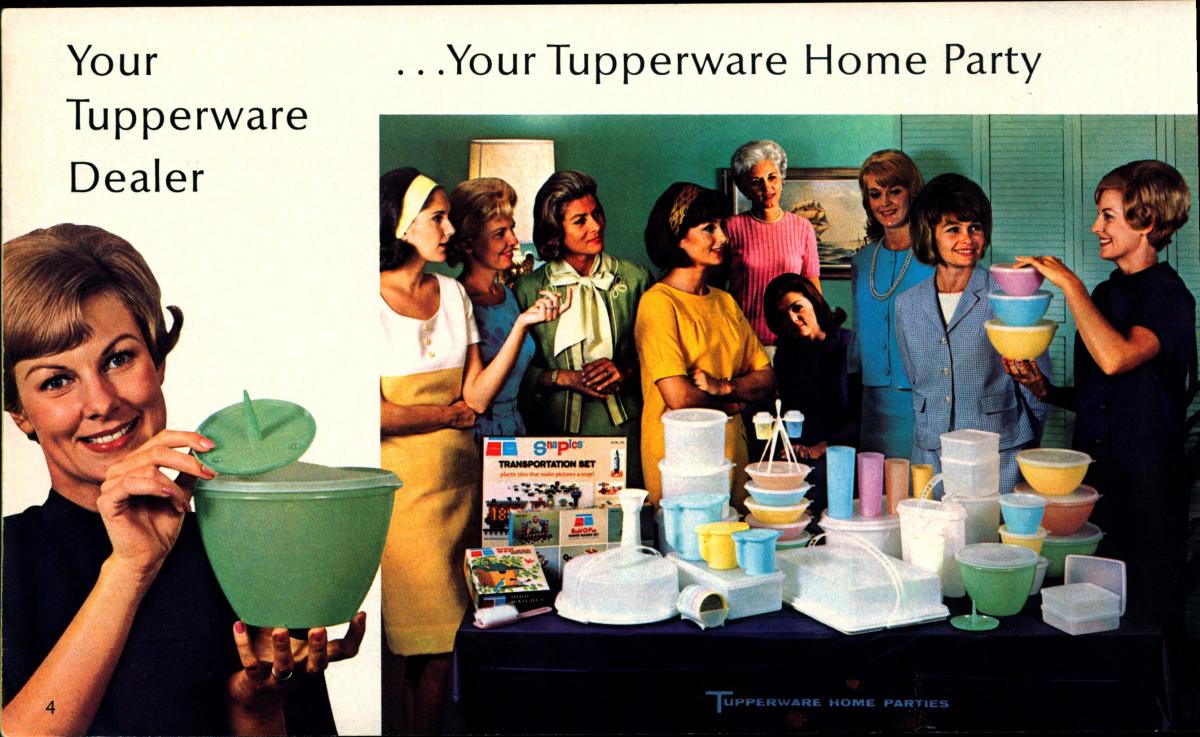
Recently, Tupperware parties have lost their appeal for modern customers. Sales have declined as there are many similar products available on the market. Tupperware tried to expand its reach and attract new customers, selling its products on Amazon as well as in stores like Target and Macy’s, but financial troubles continued to pile up.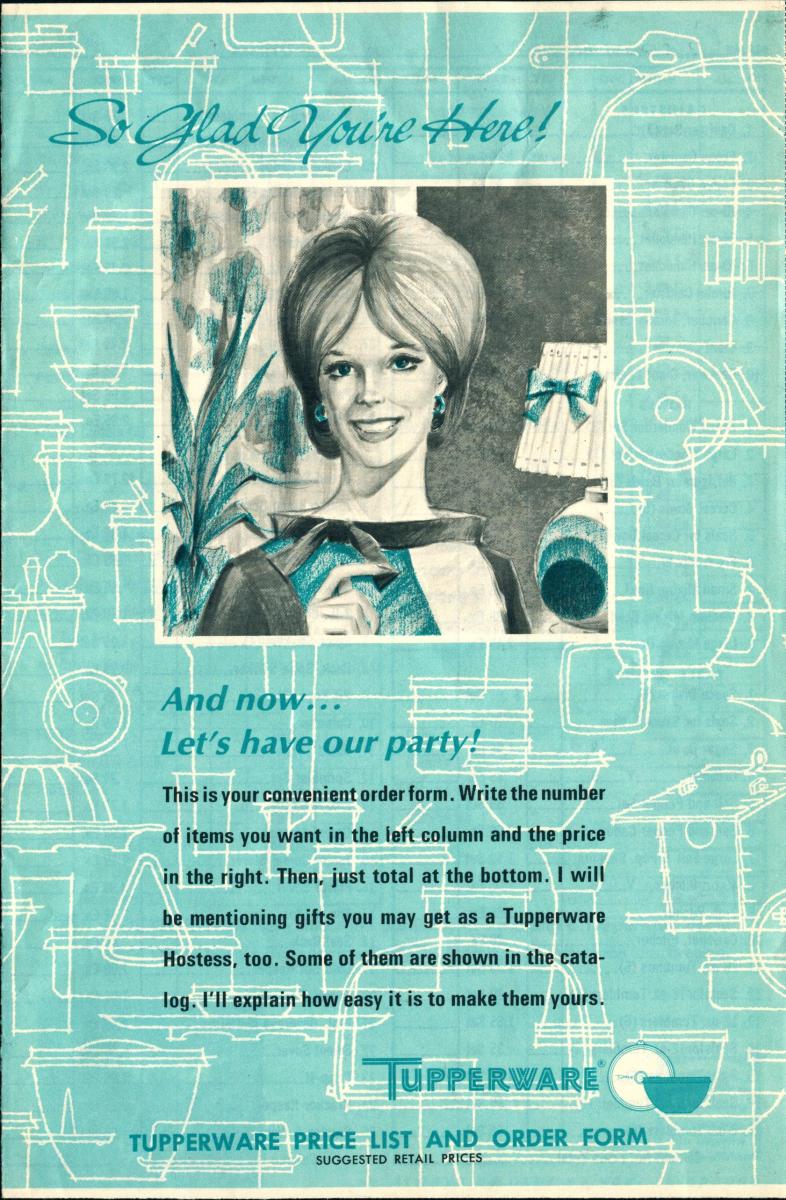
In a statement, Tupperware President and CEO, Laurie Ann Goldman, acknowledged Tupperware’s recent financial struggles and said that the bankruptcy process is meant to provide “essential flexibility” as the company pursues this transformation. The brand, she maintains, isn’t going anywhere.
We’ll have to wait to see what the future holds for Tupperware. The Tupperware website is still operational, and current, as they even have some Halloween themed items for sale. It looks like you can either shop online or connect with a Tupperware representative should you want a more personal interaction, even if the party is over.
Further reading: Clarke, Alison J. Tupperware: The Promise of Plastic in 1950s America. Smithsonian Institution Press, 1999.
Images from: Tupperware Home Parties. Tupperware. Tupperware, 1968.
Linda Gross is the Reference Librarian at Hagley Museum and Library
